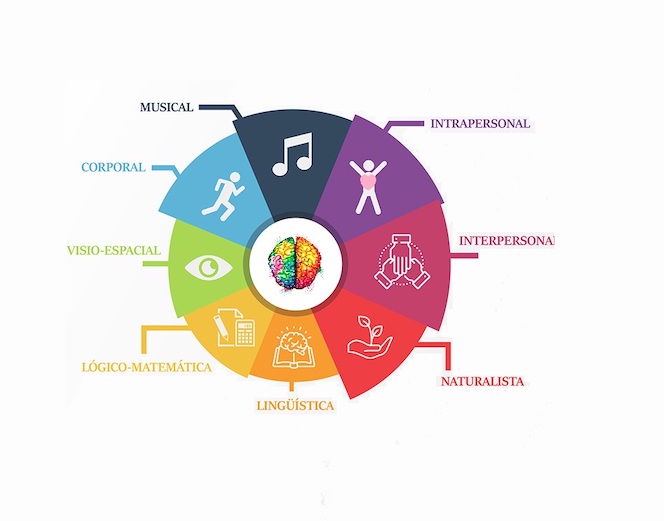
Multiple intelligences are the recognition of the diversity of skills and abilities. The theory of multiple intelligences was first proposed by Howard Gardner in his book Frames of Mind in 1983.
Gardner points out that there is no single intelligence in human beings, but rather a diversity of intelligences that mark the potentialities and significant accents of each individual, which are traced by their strengths and weaknesses in a whole series of intelligence expansion scenarios.
Traditionally, it was believed that intelligence was predetermined and fixed, that no matter how hard one tried, one was not able to increase one's intelligence. People accepted that intelligence was invariable: if you had only a small amount of intelligence, there was not much you could do to change it. There were even tests that could determine a person's level of intelligence based on their answers to what were considered standard questions.
Howard Gardner returned to the original definition of intelligence and reflected on the skills and abilities needed to solve problems within a culture. Based on current knowledge about the world, the brain and communities, he reformulated the concept of intelligence.
What abilities are desired and what are human beings capable of?
Gardner realised that intelligence could not be limited to a single category, but could be classified into eight distinct areas. Gardner argued that people possess all eight areas, but that each individual is strong in some of them.
Eight types of multiple intelligence
Gardner defined intelligence as:
- The ability to find solutions to life's problems.
- The ability to acquire new knowledge to understand a subject.
- A set of skills useful to the community, be it a product or a service.
Multiple intelligences are not something that can be seen or counted: they are potentials that are activated or not depending on the values of a given culture, the opportunities available in that culture and the choices made by each individual or their family, their teachers and others in their usual circle.
To date, Gardner and his team at Harvard University have identified eight different types of intelligence:
- Linguistic-Verbal: The mastery of language.
- Logical-Mathematical: The ability to conceptualise logical relationships between actions or symbols.
- Visual-Spatial: The ability to observe, recognise the world and objects and get an idea of their characteristics from different perspectives.
- Musical-Auditory: The ability to recognise the characteristics of sound.
- Bodily-Kinaesthetic: The ability to coordinate body movements.
- Intrapersonal: The ability to know oneself, one's feelings, thoughts...
- Interpersonal: the ability to empathise and understand the choice of friends, partners...
- Naturalistic: The ability to detect, differentiate and categorise aspects linked to the environment. Such as animal and plant species or phenomena related to climate, geography or natural phenomena.

Implications for learning
The most important educational implications of the theory of multiple intelligences can be summarised as individualisation and pluralisation. Individualisation posits that, since everyone is different from everyone else, there is no logical reason to teach and assess learners in an identical way.
Presenting a variety of activities and approaches to learning stimulates all learners and encourages them to be able to think about the issues raised from different perspectives, which helps them to deepen their understanding of the issue.
The theory of multiple intelligences states that everyone possesses all eight areas of intelligence, but to varying degrees of competence and that an individual's learning style is not related to the areas in which they are most intelligent.
For example, a person with linguistic intelligence does not necessarily learn best through writing and reading. Classifying students only by their learning styles or areas of predominant intelligences can limit their learning potential.
Research shows that students are more engaged and learn better when they are offered a variety of ways to demonstrate their knowledge and skills, which also helps teachers to more accurately assess students' learning process.
Gardner's hypothesis has been accepted and adopted by many schools where it is often used to underpin the debate on learning styles and methods.
You can find out more by following this link, which will take you to the programme Redes.